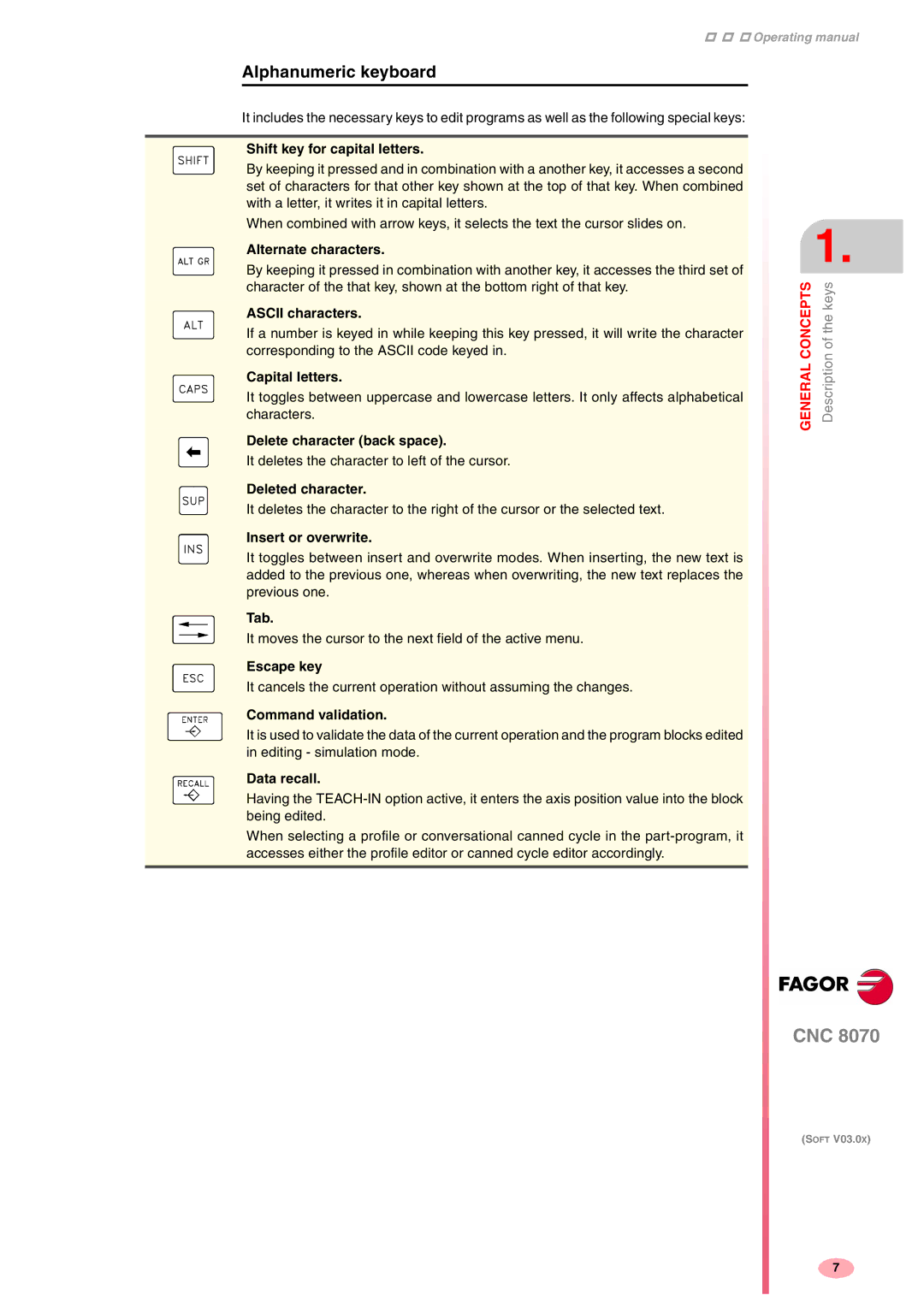
Operating manual
Alphanumeric keyboard
It includes the necessary keys to edit programs as well as the following special keys:
Shift key for capital letters.
By keeping it pressed and in combination with a another key, it accesses a second set of characters for that other key shown at the top of that key. When combined with a letter, it writes it in capital letters.
When combined with arrow keys, it selects the text the cursor slides on.
Alternate characters.
By keeping it pressed in combination with another key, it accesses the third set of character of the that key, shown at the bottom right of that key.
ASCII characters.
If a number is keyed in while keeping this key pressed, it will write the character corresponding to the ASCII code keyed in.
Capital letters.
It toggles between uppercase and lowercase letters. It only affects alphabetical characters.
Delete character (back space).
It deletes the character to left of the cursor.
Deleted character.
It deletes the character to the right of the cursor or the selected text.
Insert or overwrite.
It toggles between insert and overwrite modes. When inserting, the new text is added to the previous one, whereas when overwriting, the new text replaces the previous one.
Tab.
It moves the cursor to the next field of the active menu.
Escape key
It cancels the current operation without assuming the changes.
Command validation.
It is used to validate the data of the current operation and the program blocks edited in editing - simulation mode.
Data recall.
Having the
When selecting a profile or conversational canned cycle in the
1.
GENERAL CONCEPTS | Description of the keys |
CNC 8070
(SOFT V03.0X)
7
